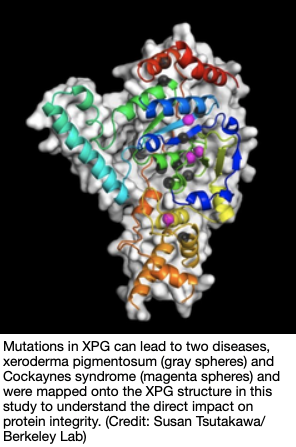Protein Sculpts DNA to Repair Harmful Damage

In this study, small angle X-ray scattering (SAXS) at ALS-ENABLE beamline 12.3.1 of Berkeley Lab’s Advanced Light Source was used to see the shapes of individual DNA molecules providing an essential clue as to how XPG works to identify and process damaged DNA. SAXS is a technique that has recently evolved to allow scientists to analyze flexible molecules moving freely between their natural states rather than in static or frozen conformations, as necessitated by crystallography. Such an approach is sorely needed for a protein like XPG, whose catalytic core is only one-quarter of the total structure and the rest is made of highly flexible “disordered” regions with no default shape.
Recent Comments